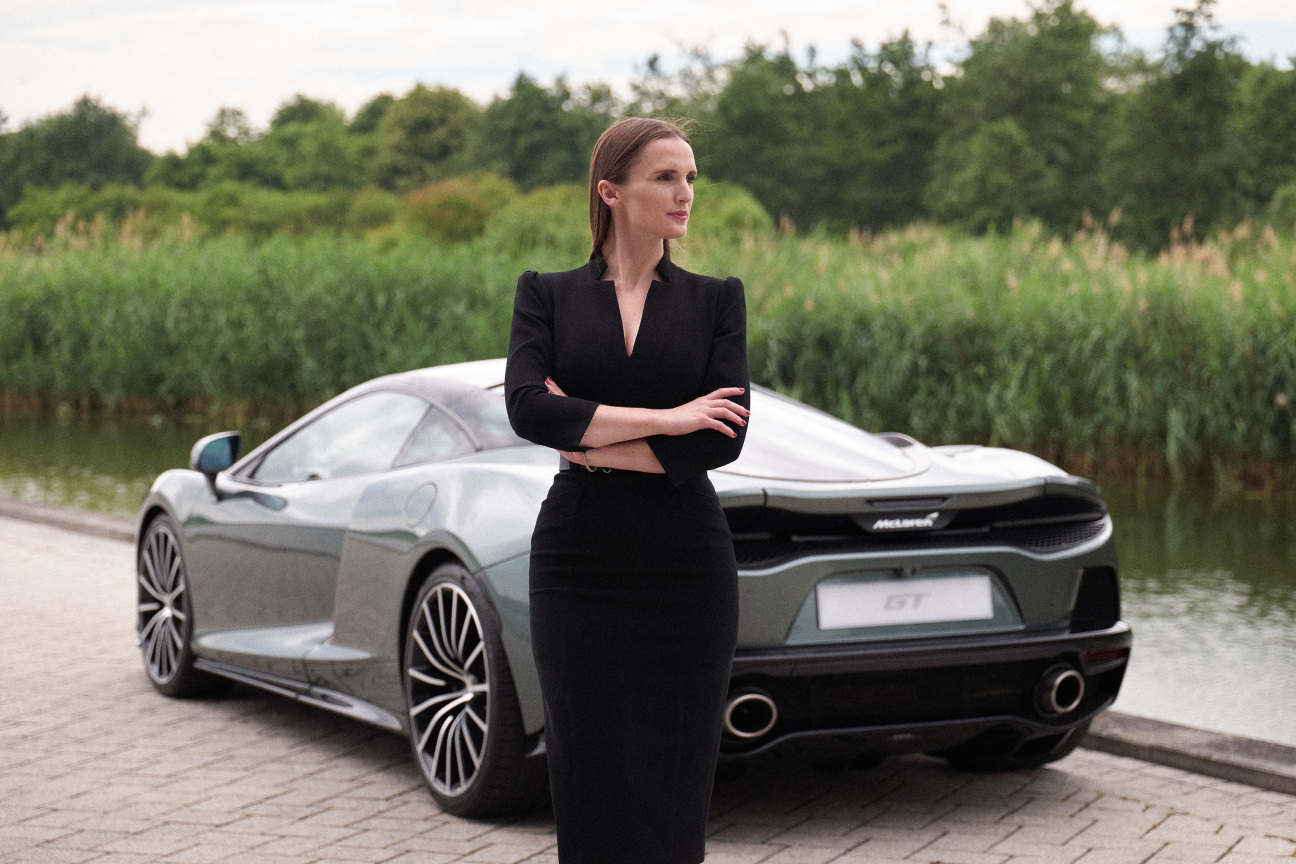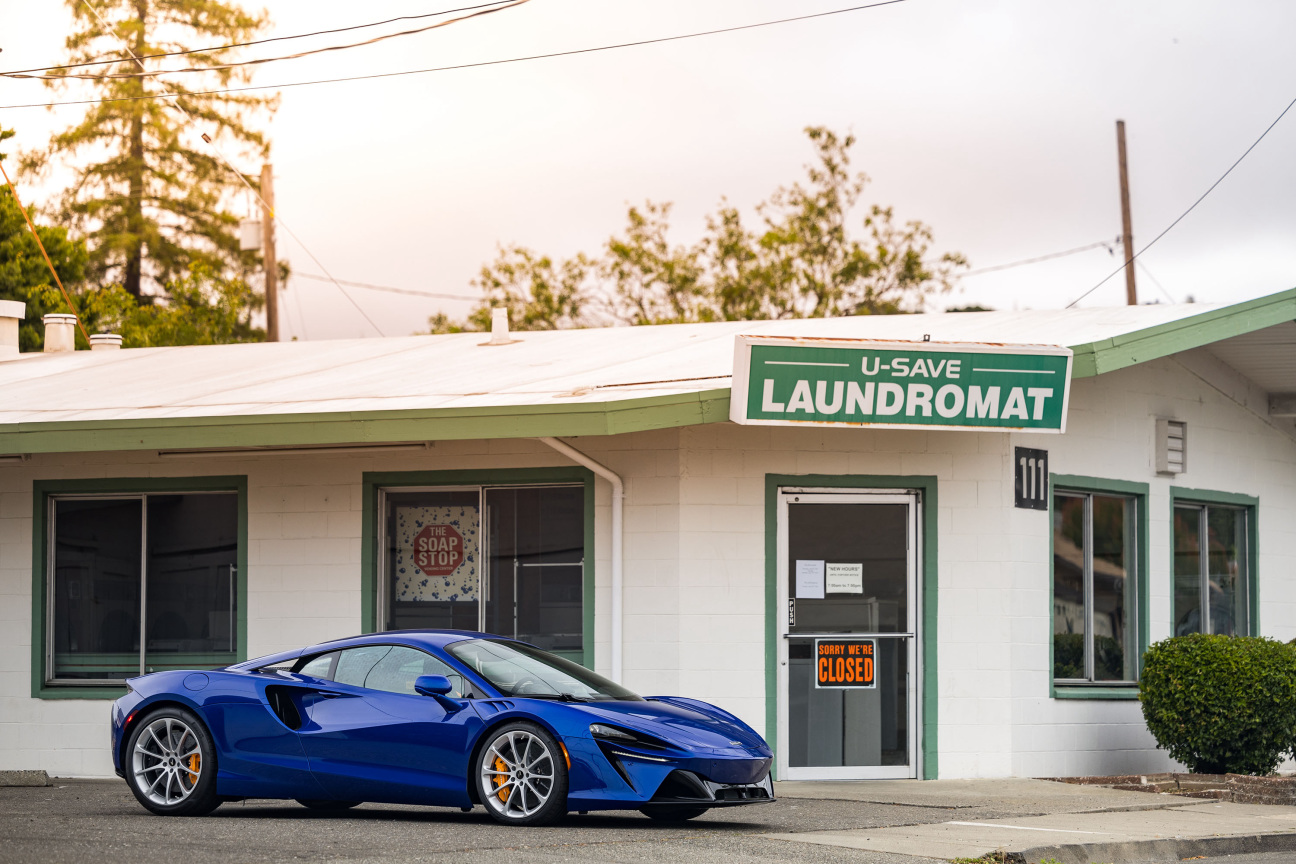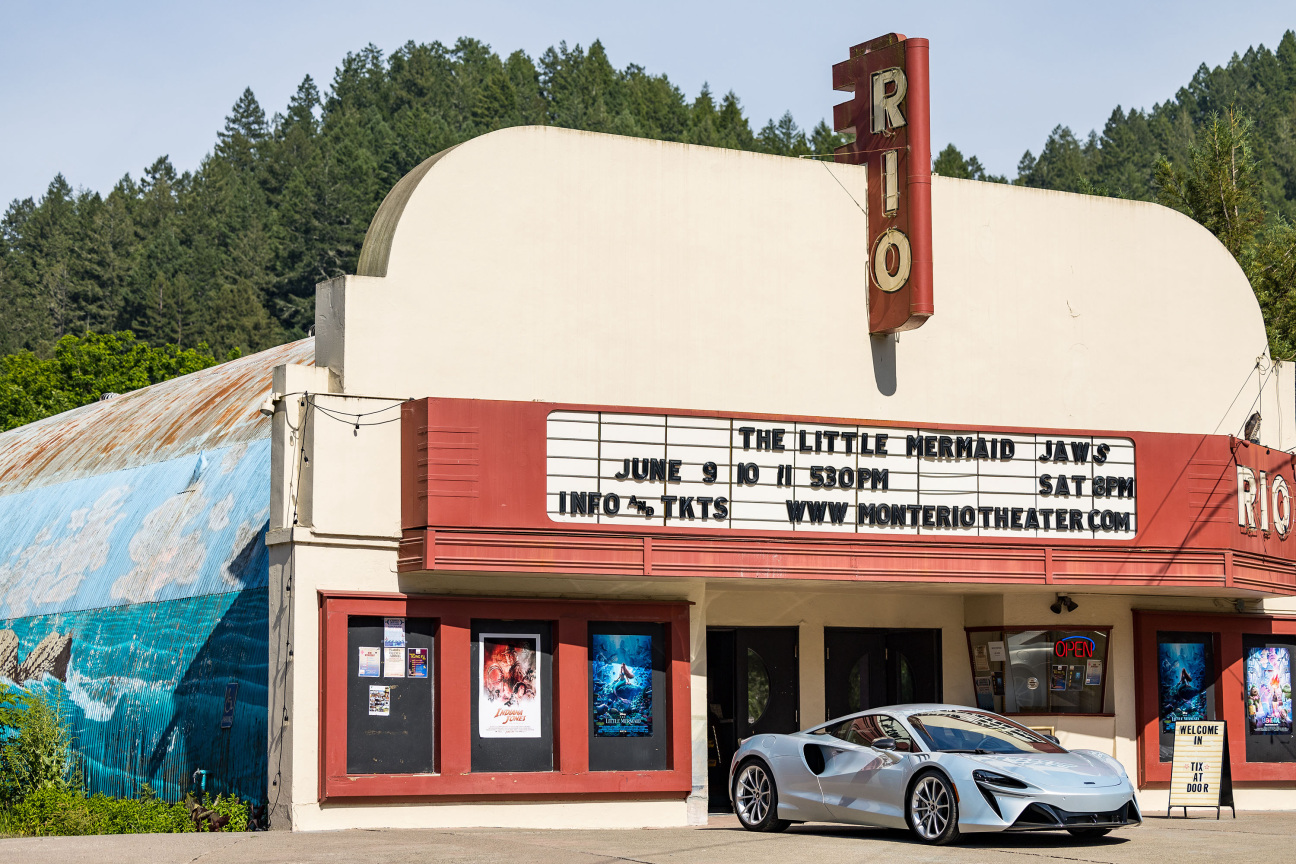
The winding, lush roads of Northern California demand road trips, fast rides, and taking the scenic route. McLaren’s Artura, its latest foray into the world of sustainable, luxury vehicles, presented at the company’s Press Drive in Sonoma, wants to be the car you drive on such excursions. The vehicle, which was crafted in part by the McLaren’s head of Color and Materials Design, Jo Lewis, pulls from the designer’s background in textile design to bring customer-loved materials like cashmere into the fray. CULTURED spoke to Lewis about finding her niche as a designer in the automotive world, not to mention as a woman in what she says can be a masculine industry.
CULTURED: How did you come to your current position?
Jo Lewis: A career in automotives wasn't necessarily a path I had in mind. When I was going into studies and deciding what I wanted to do with my future, I turned to things I love to do. I was always very creative. I love materials, fashion, and textile products. I ended up going through Central Saint Martins and specialized in textiles there. Generally, with that kind of route, people tend to go into either fashion or interiors. As much as I really liked that, I felt like I wanted to do something more innovative.
So, following my degree, I went and did my masters at the Royal College of Art. That's where I found lots of new and exciting techniques like 3D printing. I was scouted for a … more engineering-focused role. I learned a lot about polymers and plastics; that was my specialization. I'm actually dyslexic, so my strengths at school were never maths and the sciences, but weirdly, I ended up at a job where I have to bring that into my design development. I found a way to do it, even though my mind isn't set up to be a scientist. Since then, I've worked for brands like Lotus, and I ended up at McLaren. I joined over seven years ago, and I haven't looked back.

CULTURED: How did it feel to see people's reactions to the new McLaren Artura?
Lewis: I started the Artura in 2016-17. So it's been a long time in the making—I'd almost compare it to having a baby. You start with the concept of the idea, and you literally give birth to it. You see that development, and you put everything into it. Your whole work day can be deep-diving into this one product. When you see your design at the end of the line or driven down the road by a customer, you feel hugely proud. The reaction is amazing. A lot of the media coverage on the Artura hasn't had a lot to do with automotive or supercars themselves, but I love fresh eyes on something that I've created, and it reignites the whole [process].
CULTURED: Where do you find inspiration?
Lewis: Gareth Pugh, who is a British fashion designer that makes interesting forms with his design, and they're quite bold and outrageous and theatrical. There is that element of boldness and brashness with some of these ideas. At the moment, I'm into graffiti artists and what they're doing. Banksy is an obvious one. I love the storytelling that goes into that kind of design.
CULTURED: What is the set sustainability standard going forward for McLaren? What does that mean for this car?
Lewis: We always say, "no idea is a stupid idea." Pushing, pioneering, and setting that benchmark of sustainability in the industry is where I feel we are as a brand. There probably was a time at McLaren where it was not so prevalent. We know customers are asking more about sustainability, and what we're doing is looking more into the source materials. How can we ensure that we are upping the recycled content? Can we kind of update and work better with suppliers to ensure that our materials are more sustainable?
For example, most car manufacturers in the industry use leather. We like to work with suppliers that have the same synergy in terms of the brand. Our [leather production] has the lowest CO2 carbon footprint of any leather in the whole world. The company that developed it had developed a process in which when they produce that piece of leather, the waste goes back into their process to make the next piece of leather. So, ultimately, it's carbon neutral.

CULTURED: What are the technical aspects of your job? What creative aspects do you love most?
Lewis: In part, I'm responsible for everything you see on the car, whether it's inside or outside, whether it's a wheel, a batch, a paint. I need to understand every type of material in depth. People don't expect that from the title of the role that I have; it sounds fluffy. We really have to get into the science of materials and how they're made. For example, carbon fiber. I've stripped it back to its bare state. How can we look at different kinds of equipment and digital design to take a carbon fiber weave and make it more lightweight?
Luxury fabrics are not that prominent in auto design because they're not durable, but I really wanted to look at durability with cashmere. By going back to the fiber itself, you get right into the details of that micro level and then you can build up and create something different and new. I love to be the person that finds a way of doing something differently. Another part of my job is being very close to our customer base. We're a small volume manufacturer, so I can be close to customers, which I find fascinating. You get to know a lot about these individuals and what they like.
CULTURED: Is there any material or color that you're currently obsessed with?
Lewis: Pink, for the minute. Those more feminine colors are really springing out on me. I love that kind of approach, given that automotives are seen as more of a manly environment. I take trends with a pinch of salt. I find I appreciate what they're about, but I equally feel that as a team, and especially in terms of colors, we have to be three, maybe four years ahead. I'd like to think that we set trends. Color development is a really interesting one.
We've got the 765LT, a super track-focused car. It's quite extreme, quite aggressive looking. I'd found this super cool color, and it was actually a nail varnish that I had. I didn't tell anybody. It's a kind of corally, almost orange color. I got it on the car; there was a lot of pushback. People like to play it quite safe with colors. At the time, the CEO was like, “No, let's do this, this looks amazing.” But secretly, it was based on a nail varnish. I don't think anyone knows that intuitively now.










 in your life?
in your life?

